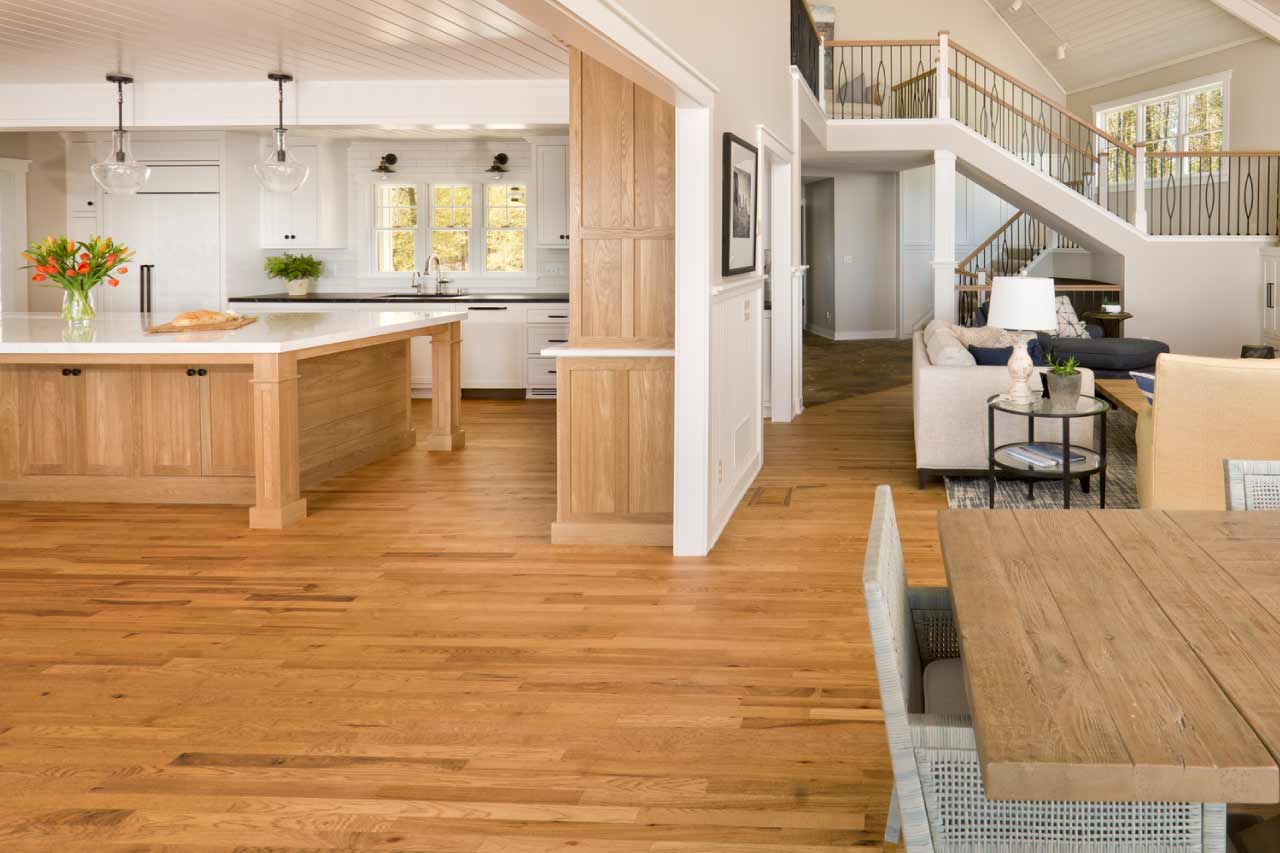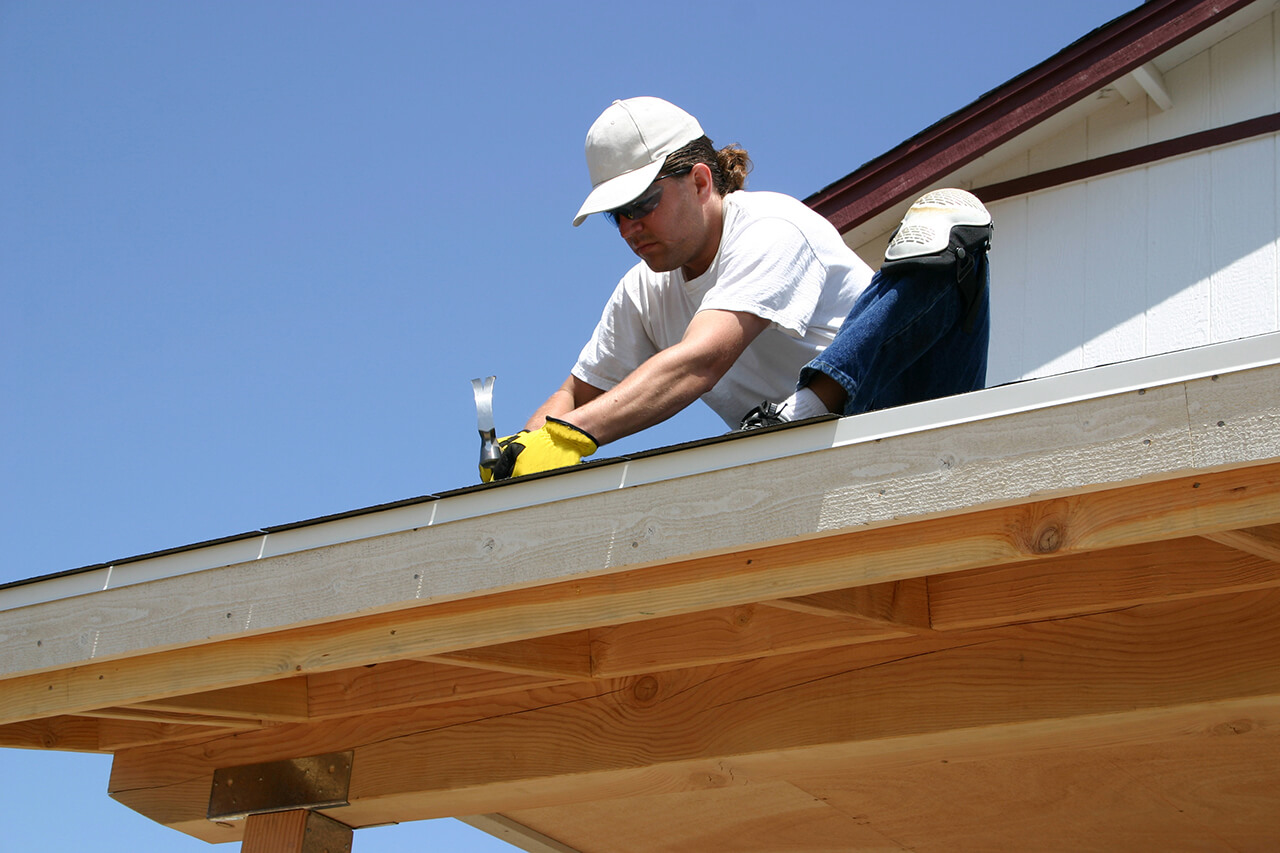How Much Does Oak Flooring Cost to Install?


2022 Notice: Material Prices Are Surging
Demand for siding and other building materials has grown over the past year. And as a result, manufacturers are increasing materials prices. Prices have gone up 5% to 10% this year, and many parts of the country are experiencing long delivery times. If you're planning a building project, we recommend starting as early as possible in the season, preparing for potential price fluctuations, and allowing extra time to order materials.
Oak floors cost between $1,320 and $6,840 for a 200- to 300-square-foot space, or an average of $3,130. Several factors can impact your overall oak flooring cost, including the size of your space, the type of oak you choose, and the state of your existing floor and subfloor.
Average Oak Flooring Costs
| Average Cost | High Cost | Low Cost |
|---|---|---|
| $3,130 | $6,840 | $1,320 |
Oak Floors Cost per Square Foot
Oak floors cost between $6 and $19 per square foot, including materials and labor. Costs can vary depending on the type of oak and flooring contractor rates. But in general, you should budget the following:
$3–$12 per sq. ft. for materials
$3–$7 per sq. ft. for labor
The table below demonstrates how the project size can impact overall costs:
| Flooring Size in Sq. Ft. | Order Size Including 10% – 20% Waste (Sq. Ft.) | Average Oak Flooring Cost Range (Materials and Labor) |
|---|---|---|
| 100 | 110 – 120 | $660 – $2,280 |
| 200 | 220 – 240 | $1,320 – $4,560 |
| 300 | 330 – 360 | $1,980 – $6,840 |
| 400 | 440 – 480 | $2,640 – $9,120 |
| 500 | 550 – 600 | $3,300 – $11,400 |
| 1,000 | 1,100 – 1,200 | $6,600 – $22,800 |
When calculating how much flooring to purchase, add between 10% and 20% to the square footage of your space, as you’ll generate waste when cutting the boards. For example, when installing oak floors in a 200-square-foot space, buy enough oak boards to cover 220 to 240 square feet.
Oak Hardwood Floor Cost Breakdown
The two main cost factors for your oak flooring installation are the materials and labor. There are two main types of oak floors to choose from—red oak and white oak—and they’re priced slightly differently.
Cost of Red Oak Flooring
Red oak floors cost from $3 to $11 per square foot, uninstalled. Thanks to its durability, solid red oak flooring has long been a go-to choice for kitchens, dining rooms, living rooms, and other high-traffic areas.
Red oak has a strong, dark red color and pronounced grain pattern. Many homeowners choose not to stain it and keep the natural color of the wood intact.
White Oak Flooring Cost
White oak flooring costs about $1 more per square foot than its red oak counterpart, ranging from $4 to $12 per square foot, uninstalled. White oak is growing increasingly popular. Homeowners often install it in an attractive herringbone pattern.
Though the cost of white oak floors is slightly higher than the cost of red oak flooring, white oak tends to be more water-resistant (ideal for kitchens and entryways) and is easier to stain because of its lighter color.
Oak Flooring Installation Cost
Regardless of the type of oak you choose, you'll also need to budget for the labor to install it. You'll generally spend between $3 and $7 per square foot for labor. You may pay more for special patterns, staining, and sealing.
Get multiple quotes from professional floor installers near you, and ask if their quotes include the removal of your existing flooring. Some include these in their costs, while others charge extra.
Other Oak Flooring Cost Factors
Your biggest decisions to make when installing oak floors is whether you’ll go with red oak or white oak and whether you’ll install it yourself or hire a flooring professional. Beyond these, you’ll come across additional oak flooring cost factors that can affect the final price of your floors.
Size
One of the largest oak floor cost factors is the size of the room or rooms where you’ll be installing the floors. Remember that you’ll need to purchase about 10% to 20% more flooring materials than the space requires to allow for waste.
Engineered vs. Solid Oak Floor Costs
Solid oak floors are the traditional hardwood floors people generally think of. Engineered wood floors, however, are still technically wood, but it’s just a thin layer of hardwood (the veneer) bonded over a strong composite base (usually plywood).
Engineered wood floors cost slightly less than the cost to install solid hardwood floors and are more water- and heat-resistant. However, solid hardwood floors can last 100 years, while engineered oak floors typically top out at 40 to 50 years.
Staining and Sealing
Some homeowners want the natural tones of red oak and white oak and thus choose not to stain their floors after installation. Others may want to stain the floors to match the specific style of their home. White oak, in particular, is easy to stain.
Ask your contractor if staining is included in the quote. If it's not included, you may need to budget an additional $3 to $8 per square foot to have your oak floors stained, though you can tackle this work yourself if you have the time and knowledge. You can also purchase prefinished oak, which has already been stained in a specific color that could be a good match for your home. However, prefinished wood usually costs more.
Whether you stain your oak floors, have them sealed after installation. Ask your professional if this is included in the installation cost. Sealing protects your floors from damage and may keep you from paying the high cost of wood floor repair.
Labor Rates
In general, hardwood flooring professionals will charge between $3 and $7 per square foot for oak flooring installation. However, their costs may vary depending on local labor rates, the time of the year, and the project complexity.
For example, a company may charge you extra if you want an intricate flooring design beyond the typical straight installation. Popular wood floor designs include:
Wide plank
Herringbone
Versailles
Parquet
Chevron
End grain
While special designs can increase labor costs, some installers may offer a discount for a larger project, like if you’re replacing floors throughout your entire house instead of in just a single room.
Unexpected Issues
The quote from your flooring contractor covers straightforward installation, but they may encounter issues during the project that lead to more costs, including damage to the subfloor or joists.
| Potential Unexpected Expenses | Average Cost Range |
|---|---|
| Joist repair cost | $100 – $2,000 per joist |
| Subfloor repair cost | $1.30 – $7 per sq. ft. |
| Water damage restoration | $1,30 – $5,530 per issue |
| Asbestos removal | $1,150 – $3,050 per issue |
| Mold removal | $1,100 – $3,400 per issue |
Removal and Disposal Costs
Many contractors will include the cost of removing and disposing of your old flooring in their quote, but it's a good idea to ask before signing. If the price isn't included, you'll need to add removal costs to your budget. For example, carpet removal costs between $1 and $1.50 per square foot.
Oak Floor Cost vs. Other Hardwood Flooring
How much does it cost to install oak flooring compared to other hardwood flooring types? In general, oak tends to be on the higher end, though it’s more affordable than walnut and some bamboo installations.
Here’s what it costs to install some other common hardwood flooring types:
Pine flooring: $4.50–$10 per sq. ft.
Hickory floor: $6–$13 per sq. ft.
Bamboo floor cost: $7–$20 per sq. ft.
White ash flooring: $9–$13 per sq. ft.
Walnut floor: $11–$20 per sq. ft.
DIY Oak Floor Installation vs. Hiring a Flooring Professional
Labor makes up roughly 30% to 50% of your total oak flooring installation cost. DIY-savvy homeowners could cut costs significantly by attempting to install hardwood flooring themselves. However, hardwood flooring installations are time-consuming and laborious. Not to mention, it requires precision, handiness with tools, and a specialized understanding of how flooring works.
Because hardwood flooring installation can be complicated, most homeowners should hire a local hardwood flooring installer. They can work more efficiently and ensure a better-looking finish—especially where special patterns are concerned—and they can also spot potential issues when replacing your old flooring, like rotting joists or asbestos.
Frequently Asked Questions
Oak floors can last between 30 and 100 years as long as you keep up with regular maintenance and refinishing. You should refinish oak floors roughly once every decade, including sanding and staining. Solid oak floors tend to last longer than engineered wood floors, but you can still expect to get at least 30 years out of engineered oak flooring.
Your oak flooring will change color over time because of light exposure. You can slow this process by reducing the light exposure of your floors. For example, install curtains or lay rugs over the wood flooring.
If you’d like to alter the color of your oak floors, you can always stain them. White oak flooring is easier to stain than red oak because it’s a lighter color.
To maintain oak floors, routinely dust and mop using a special solution designed for hardwood floors. To keep your floors in good condition, lay down rugs, use furniture pads, trim pets’ nails, and encourage guests and family members to take off their shoes.
Resealing your floors every few years will also protect them. But over time, you’ll need to refinish your oak floors to repair scratches and discoloration. Refinishing wood flooring costs between $3 and $8 per square foot.
In general, the best finish for oak flooring is polyurethane. We recommend either a water-based polyurethane or an oil-based polyurethane. Both are easy to apply and are cost-effective. Water-based polyurethane, in particular, has low volatile organic compounds (VOCs), dries quickly, and has a nice shiny finish. Wax and shellac are two good alternatives for finishing oak floors.








